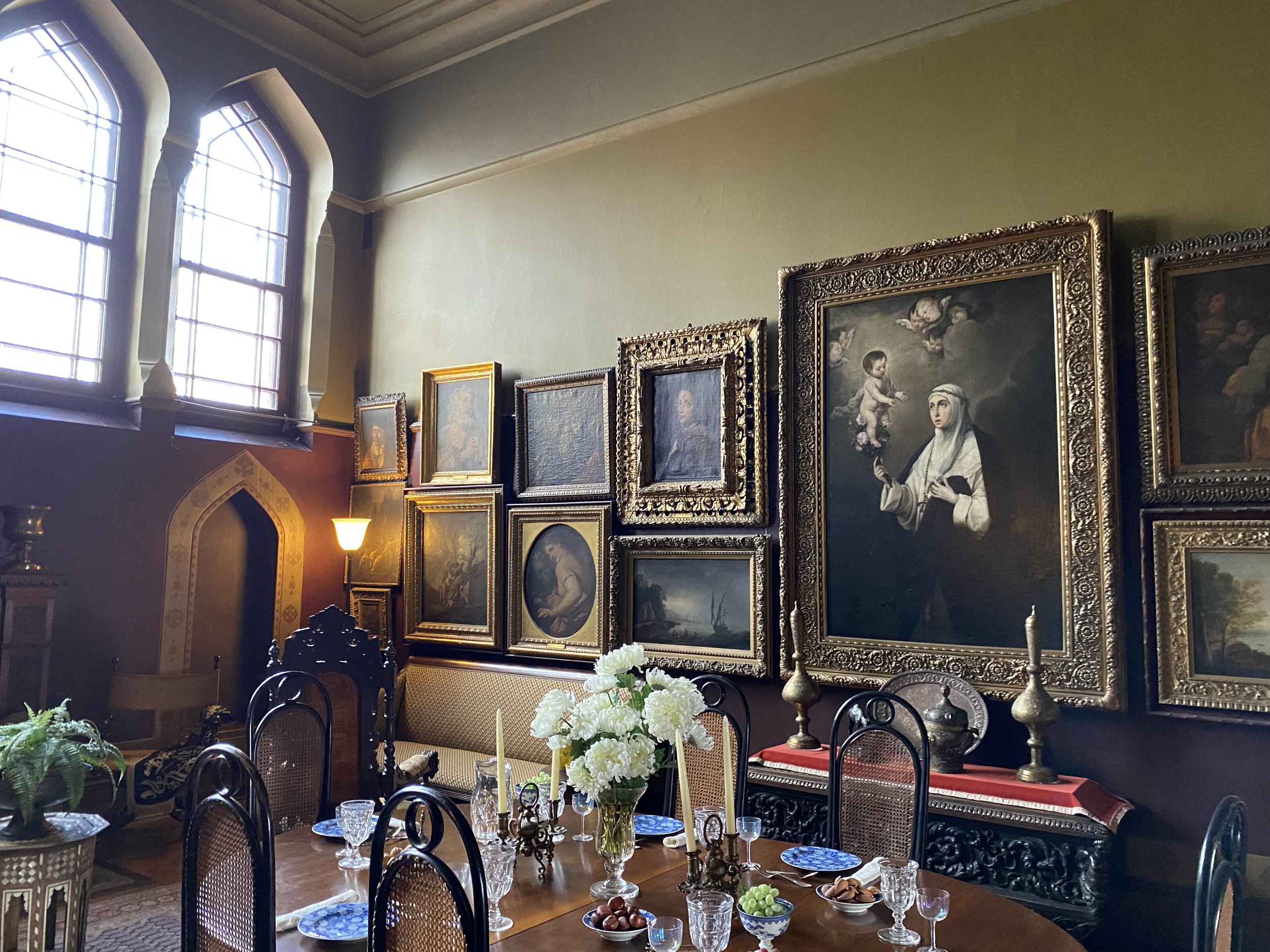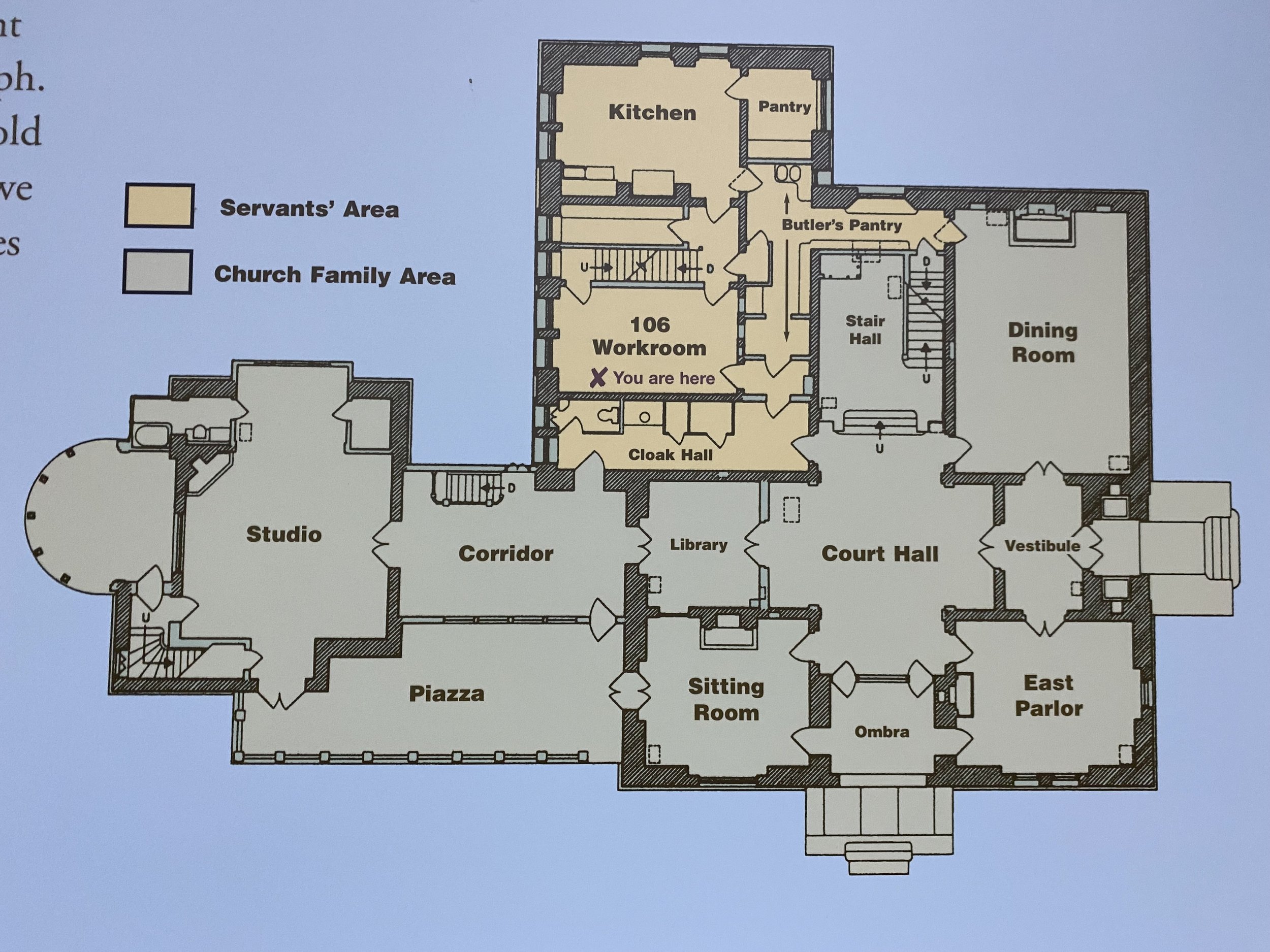Olana was home to Frederic Edwin Church (1826–1900), a major figures in the Hudson River School of landscape painting. His home (which is now a museum near Hudson, NY.) overlooks parkland designed by the artist. So he didn’t just paint landscapes - he created a landscape (excavated, planted trees, had a pond formed, etc). The house and land have been carefully preserved.
The house is situated for maximum visual impact for arriving visitors, with 2 sides meeting at the huge corner tower facing the driveway.
Inside, each window frames a perfect view:






















